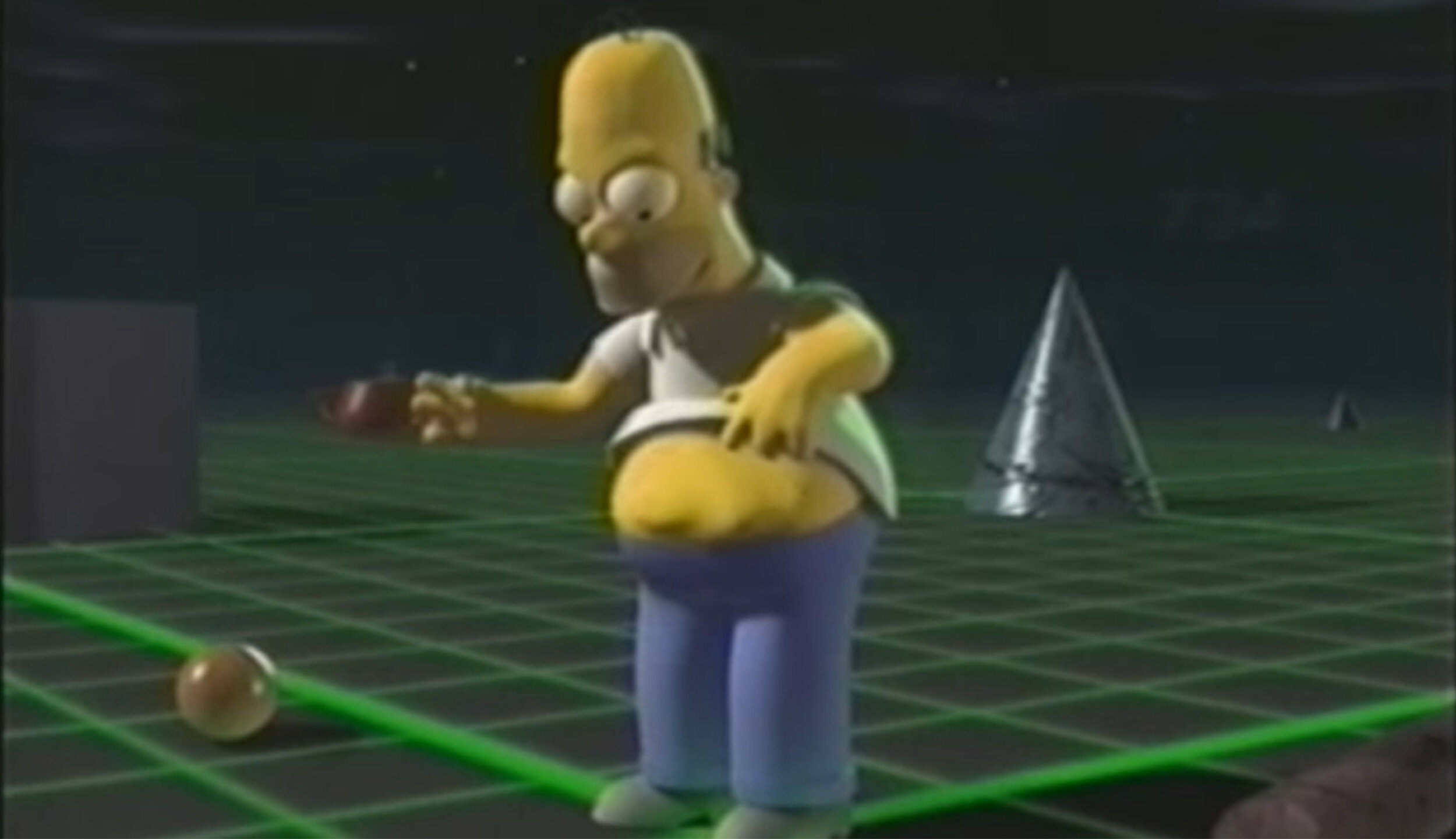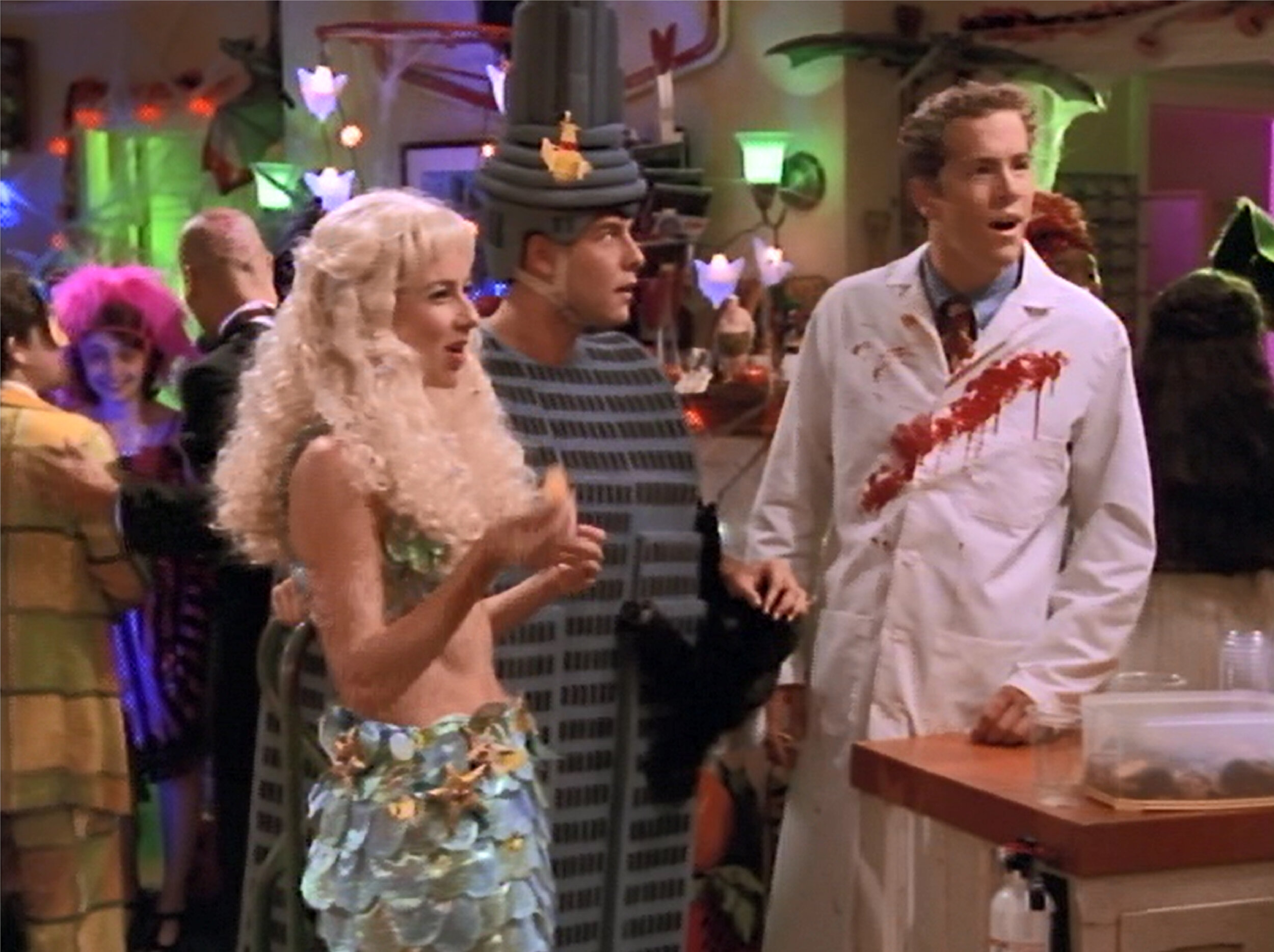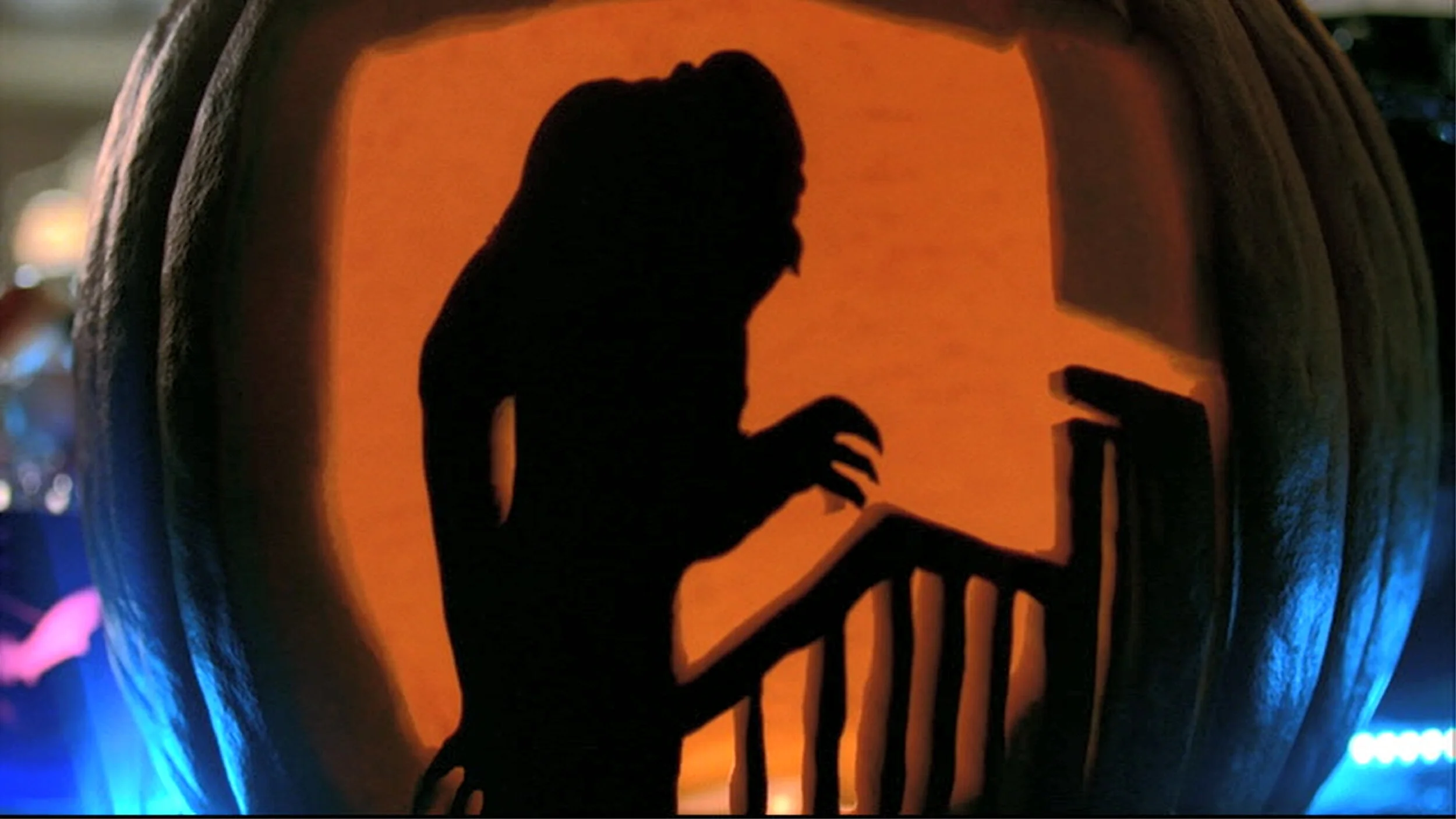Five Great Halloween Episodes
The Halloween season is upon us. A time when it’s fun to dress up, eat candy, and maybe have a few scares. Thankfully, many TV shows have made a habit of creating Halloween Specials to help us get into the spirit, but where to start?
This is going to be a list of great Halloween episodes in TV shows. It isn’t a “Best of” or “Top 5” list, but simply recommendations for great episodes to get into the spooky spirit. To be considered a Halloween episode for this list, Halloween must be explicitly mentioned in some way by the episode. This means an episode that just gets a little spookier because it aired in October doesn’t cut it.
And, hey, feel free to help this list grow! If there is another episode you feel should be on it, give it a shoutout in the comments.
*Spoilers ahead for each episode*
Honorable Mention: Psych – “Tuesday the 17th” (S03.E15)
Written by Steve Franks & James Roday
Directed by James Roday
Recap:
Shawn and Gus are hired to come check out Camp Tikihama after the disappearance of one of its counsellors. When they arrive, they discover the first counselor didn’t just disappear, she was killed, and the murders don’t stop there. In a big mid episode twist, none of it has been real at all! Shawn figures out that he was brought in for the trial run of a scary murder mystery camp for adults. Of course, that isn’t where things end. A real killer dons the fake’s killer costume and begins the whole event for real.
Why it (sort of) makes the list:
If it isn’t obvious from the title alone, “Tuesday the 17th” is an episode that pays homage to the Friday the 13th movies. This goes from the obvious of having a killer terrorizing counselors at a Summer camp, to the smaller details like having the owner of the camp be named Jason Cunningham, referencing both Jason Voorhees (the killer in most Friday the 13th movies), and Sean S. Cunningham (the director of the first movie).
Psych is a comedy-detective series, and so doing a Friday the 13th episode ends up closer to a loving commentary on it rather than straight horror. The way the show remains true to itself with the mid-episode twist, only to go all out slasher immediately after, keeps it all feeling fresh.
Alright… this was basically starting the list off with breaking the rules immediately. This episode is not a Halloween special, but that’s why it is just being considered an Honorable Mention. It’s hard to deny how much fun watching a slasher flick around October can be, and this episode is a great take on one of the classics of the genre.
The Simpsons – “Treehouse of Horror VI” (S07.E06)
Written by John Swartzwelder & Steve Tompkins, and David X. Cohen
Directed by Bob Anderson and David Mirkin (Live-action segments)
Recap:
This episode is actually a collection of three short, horror themed, segments. “Attack of the 50-Foot Eyesores” has billboard sized advertisements coming to life to destroy Springfield. “Nightmare on Evergreen Terrace” has Groundskeeper Willie haunting, and murdering, the children of Springfield in their dreams. And “Homer3” has Homer ending up in the third dimension, with his family trying to get him out.
Why it makes the list:
The Simpsons has had a Treehouse of Horror episode every year since season 2 (this year will be “Treehouse of Horror XXXI”). It is a tradition that has gone hand in hand with Halloween for some people’s entire lives. And so, it would feel terrible to have a Halloween episode list without the inclusion of one of these. Though, it is worth pointing out that the only explicit mentioning of Halloween is in the title card of the episode, but that’s enough.
Like most Treehouse of Horror segments, the three presented here each pay homage to various other stories in culture. In this case, Attack of the 50 Foot Woman, Nightmare on Elm Street, and Twilight Zone’s “Little Girl Lost”.
So, why was this one chosen out of the 30 options available at the time of writing? Sheer bias of this one being the most memorable from this writer’s childhood.
In “Attack of the 50-Foot Eyesores”, the concept of these billboards and statues coming to life and causing destruction does double duty in that it both acts as a toned down horror premise, while also spoofing the concept of effects of advertising. In the end, stopping these monstrously sized ads from destroying the town takes nothing more than to simply not pay attention to them.
“Nightmare on Evergreen Terrace” is the segments that leans the most into horror (though, not even this one is exactly scary). The idea of haunting dreams like Freddy Krueger has always come off as one of the more terrifying ways a killer in slasher flicks has worked. The usual safety of being in bed, protected by a blanket that shields you from the monsters, is no longer logic that applies when the monster attacks specifically when you’re asleep. Of course, the segment still goes for some great laughs, like the whole flashback of how Willie is burned to death because of the PTA’s choices with budget.
And finally, there is “Homer3”. Who hasn’t wanted to find the perfect hiding place when family is coming to visit? Homer does just that and ends up in a world of CGI, back in the days where it was far less common to do. For context, this episode came out in October of 1995. The first fully CGI movie was Toy Story, which came out about a month after this episode, and the first computer animated half hour series was ReBoot, which came out just a year before in 1994.
The CGI in “Homer3” arguably still holds up for what it is trying to be. This is helped by the fact that it isn’t aiming for realism, and everything created in this world, aside from Homer himself, are just basic shapes. In the end, this CGI Homer even visits the “real world” where he walks into an erotic cake shop, on a street filmed in live action. In an episode filled with memorable moments, this one tops it all.
Buffy the Vampire Slayer – “Halloween” (S02.E06)
Written by Carl Ellsworth
Directed by Bruce Seth Green
Recap:
Evil takes a night off for Halloween, so Buffy and the Scoobies should be free to take kids trick or treating, right? Turns out the new costume shop in town has had all its stock cursed to turn the wearer into whatever they are dressed up as. With Buffy stripped of her power and changed into a Victorian damsel, it is up to Willow, Cordelia, and Angel to stop the vampires looking to take advantage of Buffy’s state.
Why it makes the list:
As a supernatural horror series, Buffy the Vampire Slayer may seem like every episode could be perfect for Halloween, but there are just a few that give it special attention. This is a series that emphasizes a coalescence between theme and plot, and so when it comes to doing an episode about the time of year where everyone puts on costume, the focus is put on what it means to do so. “Halloween” takes the idea of dressing up like someone else and fully has its characters become their costumes as they struggle with their own identities.
Buffy has reached a point where she worries that she isn’t the type of woman Angel could possibly love. She feels like she needs to be more lady-like in order to keep his attention, and after seeing an imagine of the type of woman Angel dated in his past, decides to dress up like one of them. She loses all her powers and becomes helpless and scared as vampires and monsters begin to attack.
Meanwhile, Xander is dealing with the exact opposite problem. He feels like he isn’t nearly masculine enough and so he dresses up like a gun wielding soldier. This episode also ends up having a lasting impact on the series, with Xander’s time as a soldier giving him knowledge that is returned to again and again to help various plots.
Thankfully, by the end of the episode Buffy learns to be more comfortable with herself as she is, but Xander doesn’t seem to learn any such lesson… While this show can do a lot of things right, there are still moments where it doesn’t age the best.
It also says a lot that Cordelia is the only one in the group who isn’t transformed. The episode has the reasoning of her having gotten her entire costume from a different store than the cursed one, but thematically it is perfect because Cordelia is a character who is so often seen to be so comfortable with who she is.
As one final plus, “Halloween” is the introduction to Ethan Rayne and the concept of Giles’s past as “Ripper”. Given the context of the episode, it begs the question of whether Giles’s librarian persona is a costume, or kind of presentation, itself. Ethan even explicitly calls out this idea when Giles confronts him.
Community – “Epidemiology” (S02.E06)
Written by Karey Dornetto
Directed by Anthony Hemingway
Recap:
Greendale Community College is having a Halloween party! What starts as a fun time with everyone in costumes, quickly changes when it turns out the taco meat the Dean has purchased is turning everyone into zombies. The night becomes a fight for survival for the study group, complete with an Abba soundtrack.
Why it makes the list:
While season two of Community expands the series out from the college, allowing for occasional scenes in apartments and elsewhere, “Epidemiology” returns to a more confined setting. This episode takes safe places like the study room and turns them into the scene of a zombie outbreak.
The Halloween credentials are set up immediately with even the first scene starting off at a Halloween party already in progress. The costume element to the party ends up being a driving force for individual character moments. There are small things, like the adorableness of Jeff having to help Britta with her drink because her T-Rex arms are too little, but then there are other points that get much deeper.
Troy is arguably the main character of the episode, who begins dressed up as though he is in the power loader from Aliens, with Abed as a Xenomorph. Troy strikes out with two women, and goes to Jeff for advice, where he is told he is reminding women of taking their little brothers to comic con.
After this, Troy changes into a new “costume”. He calls himself a sexy Dracula (when Abed corrects him, calling him just a vampire, Troy says he doesn’t care which Dracula he is). He is basically just shirtless, with cuffs made of toilet paper and a collar that is a toilet seat cover. Most of the episode is spent with him doing his best to look cool and more adult because of what Jeff said to him.
It isn’t until late in the episode that he comes to terms with the nerd he is and gets his power loader costume back on to try to protect himself from the zombies as he attempts to turn on the AC to stop the infection from spreading. The costume fails miserably, and he is bit, taking the character moment and bringing in some comedy.
There is also Shirley and Chang, who come together based off their mutual problem of nobody knowing who they are dressed up as. This is the only part of the episode that continues into the series. Everyone is changed back from being a zombie and have their memories erased, leading to a situation where the episode could almost be considered non-cannon or like a dream episode. But the Shirley and Chang hooking up comes back as a major plot point in the second half of the season.
On top of all this are the other fun elements like of the juxtaposition of zombies with Abba’s music, and George Takei doing a narration over the beginning and end.
Castle – “Vampire Weekend” (S02.E06)
Written by Terri Edda Miller
Directed by Karen Gaviola
Recap:
Castle and Beckett investigate a murder where the victim was dressed as a vampire and killed with a stake to the heart. The case takes them to a vampire coven, before linking up with a cold case from decades prior. Castle, meanwhile, has a lot of his focus devoted to his annual Halloween party, and reminding everyone that they better dress up.
Why it makes the list:
Crime shows often take Halloween as a chance to play around with the supernatural, even when monsters don’t exist in their world. In “Vampire Weekend”, Castle does just that by having the case revolve around people who dress like vampires, and even one who dresses like a werewolf. They go so far as to have one of the “vampires” suffering from porphyria, which causes the man’s skin to blister when touched by sunlight. This is a real condition, though the effects on the show are extremely exaggerated.
The case revolving people who dress up as vampires leads Beckett to wonder what causes people to have such morbid interests. Castle takes this opportunity to compare those who act as vampires, to those who try to solve (or in his case, write about) murders. He explains it as one way that people can sometimes cope after dealing with death at a young age, and Beckett uses this as an opportunity to probe Castle for what might have started his own interest in the topic.
But vampires aren’t enough to make this specifically a Halloween episode. Throughout “Vampire Weekend” Castle is making sure everyone is coming to his annual Halloween party, telling them that they can’t come without getting dressed up. In the opening scene, this becomes an excuse to dress Castle up like a space cowboy by wearing Nathan Fillion’s Mal Reynolds costume from Firefly.
This episode helps show off for Castle’s nerd cred just as much as it does for Halloween in general. When Castle first goes to the crime scene (still dressed as Mal) and finds a man with a stake in his heart, his first move is to make a reference to Buffy. As the investigation into the victim gets deeper, the plot moves from simply a vampire story to having comic books (specifically horror comics) be a huge element.
Alexis’s story pushes “Vampire Weekend” into a much more real kind of horror than others on this list. It is a short moment, but Alexis calls her father for help when her friend has drunk too much alcohol at a party. Especially from the side of the parent getting such a call, this is a kind of scene where the terror is so much more mundane and possible for any parent to relate to. It fits the theming of Halloween, while also remaining far more grounded.
Two Guys, a Girl and a Pizza Place – “Two Guys, a Girl and a Psycho Halloween” (S02.E06)
Written by Stevie Ray Fromstein
Directed by Michael Lembeck
Recap:
A Halloween party thrown in Berg and Pete’s apartment goes off the rails as Pete tries to pull a prank and Berg starts murdering everyone. It turns out that Berg has been replaced by a psycho imposter, but even when the real Berg comes together with Pete and Sharon, they are no match for the killer.
Why it makes the list:
“Two guys, a Girl and a Psycho Halloween” is another episode taking place entirely during a Halloween party gone awry. One of the ways this episode stands out among the rest is that it is one of the few Halloween episodes that are completely non-canonical, giving them the ability to actually kill off all its characters.
The fun starts right from the opening scene, as Berg is paired up with Kamen to examine a body. While the background is essentially a dark void, the scene itself kind of plays as everything is normal at first. The way the two characters interact is exactly as it would be in any other episode, right up until the point where Berg chops him up with an axe.
As Berg arrives at the party, he takes advantage of a minor fight between Sharon and Johnny to get his next kill. Johnny is a new regular for the show’s second season, giving Nathan Fillion his second appearance in this list.
It takes until about midway through the episode for the real Berg to be found tied up in the pizza place and explain that a psycho has taken his place. As the truth comes out, the comedy shifts from a dramatic irony around the characters not realizing people have been killed, to the completely nonchalant responses given by the characters upon seeing dead bodies.
When the episode ends, not a single one of the main characters are left alive. Where these kinds of episodes often end with the reveal that it has all been a dream or in another way get reversed, Two Guys, a Girl and a Pizza Place doubles down on the joke and plays clips for a following episode, where all the sets are empty (because everyone’s still dead).
The reveal that psycho Berg has actually been Mimi Bobeck amps up the absurdity of it all. The closest thing to an explanation that is given is simply that Mimi wanted her own show and unlimited pizza (and who can’t relate to that latter half?). It is a moment of fun network synergy, though for anyone who hasn’t seen The Drew Carey Show, her character is never explained in this one. It isn’t exactly a problem for the episode, but it does definitely become a dated reference that could be easily lost on any new viewer.








